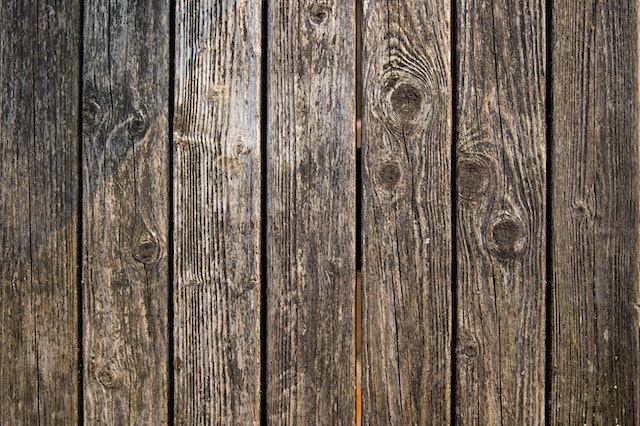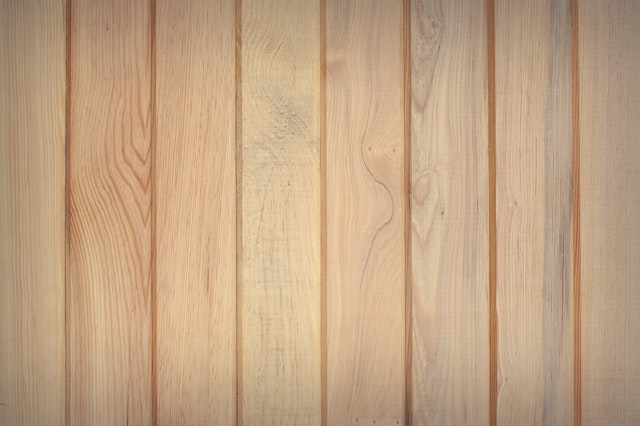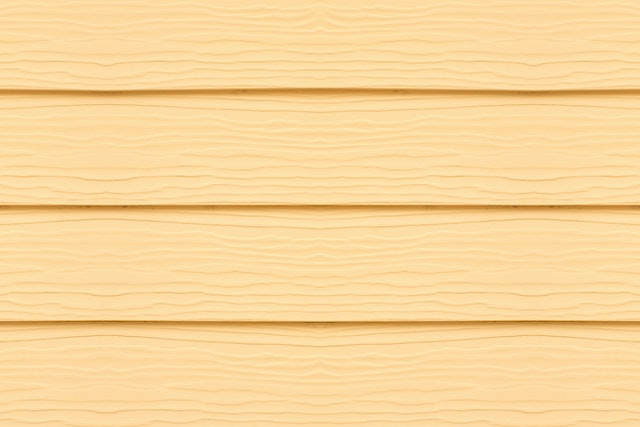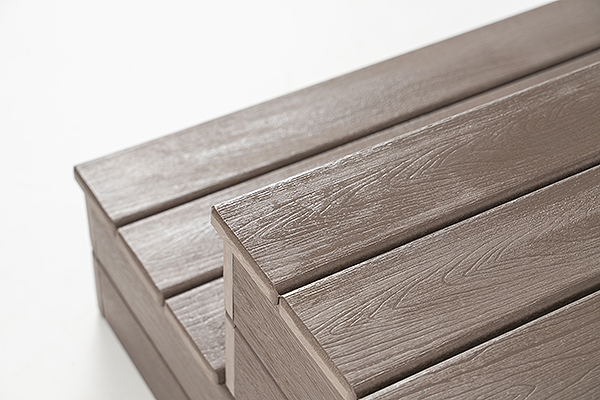When you’re creating a tranquil outdoor haven with a hot tub as the centerpiece, it’s easy to overlook the supporting players that contribute to your overall experience. Enter hot tub steps – the unsung heroes that not only offer functional accessibility but also elevate the aesthetics of your spa setup. In this deep dive, we’ll explore the merits of three popular materials – wood, composite, and poly lumber (HDPE) – to help you make an informed choice for your hot tub steps.



Wooden Hot Tub Steps: Embrace Timeless Charm
Wooden hot tub steps bring a touch of classic elegance to your outdoor space. With their warm and inviting appearance, they seamlessly blend with various surroundings, from porch steps to deck stairs. Here’s a closer look at wooden steps:
Pros:
- Aesthetic Appeal: Wood exudes natural warmth and charm, complementing the ambiance of a traditional hot tub or spa.
- Customization: Wooden steps can be tailored to fit your specific space, ensuring a snug fit for your hot tub or spa setup.
- Texture and Feel: The texture of wood underfoot enhances the sensory experience, adding comfort and tranquility.
Cons:
- Maintenance: Wooden steps require periodic maintenance, including staining and sealing, to prevent weathering, change of color, rot, and decay from outdoor exposure.
- Durability: While quality hardwoods can withstand the elements to some extent, they may not be as durable as other materials when consistently exposed to moisture.
- Cost: The cost of wood steps is significantly more expensive than other options in the market.
- Availability: You might find it a bit tricky to get your hands on ready-made wooden spa steps in the market. Often, getting wood steps might mean opting for custom carpentry to suit your needs.
Composite Hot Tub Steps: Modernity with Lower Maintenance
Composite materials, a blend of wood fibers and plastic, offer a contemporary take on hot tub steps. They seamlessly combine durability and low maintenance, making them a popular choice. Let’s delve into composite steps:
Pros:
- Durability: Composite materials are highly resistant to moisture, insects, and decay, making them well-suited for outdoor applications like deck steps and patio stairs.
- Low Maintenance: Unlike wood, composites don’t require regular staining or sealing. Basic cleaning is usually sufficient to maintain their appearance.
- Color Consistency: Composites maintain their color and appearance over time, as they are less prone to fading, warping, or splintering.
- Cost: Composite steps have a cheaper upfront cost than wood spa steps and provide long-term savings in the form of negligible maintenance costs.
Cons:
- Appearance: While composites mimic the look of wood, some may argue that they lack the natural warmth that wood provides.
- Cost: They tend to be more expensive upfront compared to some other materials like poly lumber (HDPE).
Poly lumber (HDPE) Hot Tub Steps: Elevating Sustainability and Durability
Poly lumber or High-Density Polyethylene (HDPE) offers a fusion of durability and eco-friendliness. Crafted from recycled plastic, HDPE steps are a testament to modern innovation. Here’s what you need to know about HDPE steps:
Pros:
- Durability: HDPE is highly resistant to moisture, rot, insects, and UV rays, making it an excellent choice for outdoor environments like porch steps and hot tub stairs.
- Eco-Friendly: HDPE steps contribute to a more sustainable environment as they’re made from recycled materials, reducing plastic waste.
- Low Maintenance: Similar to composite steps, HDPE steps also require little maintenance beyond occasional cleaning.
- Color Variety: HDPE steps are available in a range of colors, offering design flexibility to match your outdoor aesthetic.
Cons:
- Aesthetic Preference: Some individuals may prefer the natural warmth of wood over HDPE’s modern look.
Choosing Your Hot Tub Step Material: It's All About Balance
Selecting the perfect material for your hot tub steps involves balancing aesthetics, durability, maintenance, and personal preferences. Whether you’re seeking spa steps, hottub stairs, or even premade patio steps, each material has its unique advantages.
Are you drawn to the timeless appeal of wood or the modern durability of poly lumber or composite? Consider the climate of your location, the level of maintenance you’re comfortable with, and your desired outdoor aesthetic. Each material offers its own contribution to your spa setup, and your choice will ultimately shape your hot tub’s oasis.
In conclusion, as you design your dream outdoor retreat centered around your hot tub or spa, remember that every detail matters – including your choice of steps. With the array of materials available – wood, composite, and poly lumber – you have the opportunity to align your steps with your vision of outdoor tranquility.
DENKOE’s proprietary poly lumber
Furthermore, it’s definitely worth exploring DENKOE’s proprietary poly lumber. Meticulously designed, it features an authentic wood grain texture that adds a genuine touch to your outdoor space. Embracing DENKOE’s distinctive poly lumber allows you to savor the aesthetics of real wood while benefiting from the durability and effortless maintenance of contemporary materials. Enhance your outdoor experience with the inviting charm of natural wood, thoughtfully crafted to provide enduring enjoyment.
